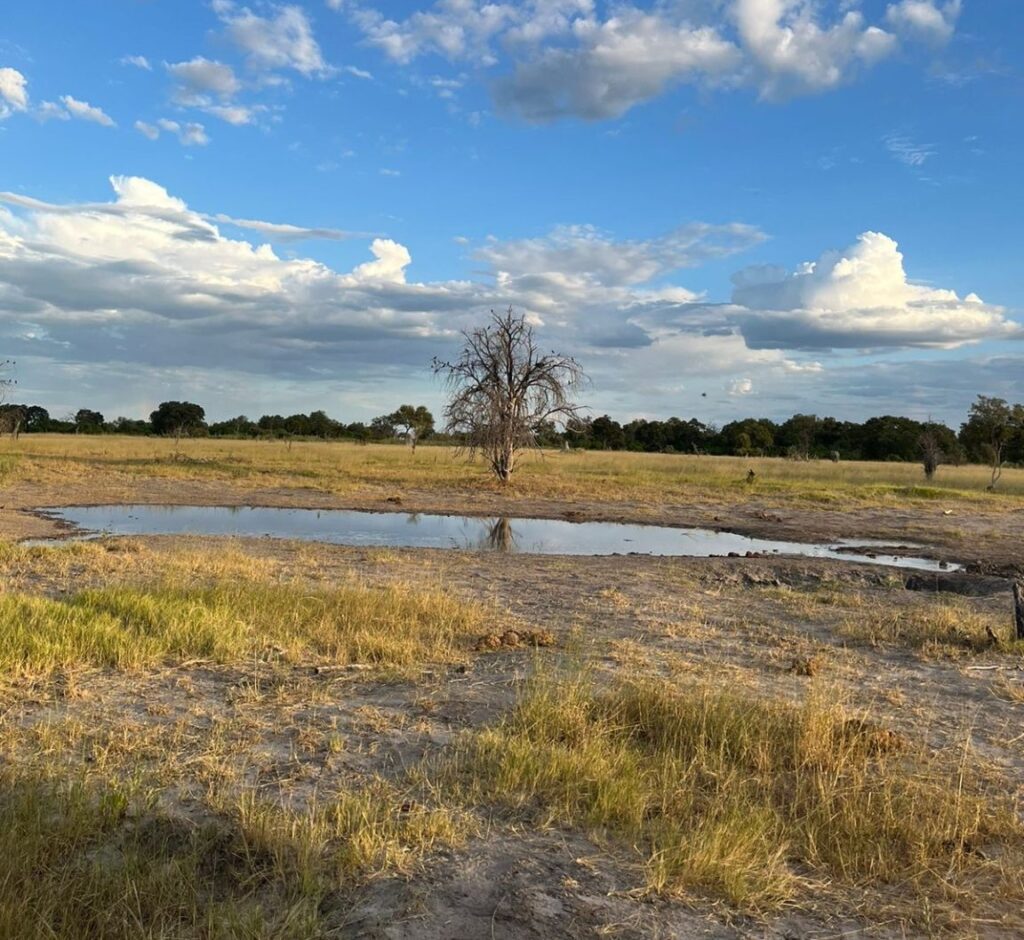Will you help us give water to elephants
who will otherwise die of thirst?
Thousands of elephants die of thirst every year in Botswana. But with Living Oasis, a plan to create watering holes along the elephant trails, we can save them.
Watch this video to see the results!
Why Living Oasis is Critical to Saving Elephants
Elephants, like all living creatures, need water to survive. However, in regions where water sources are scarce or seasonal, they can face dire consequences if they do not have access to enough water. In areas with drought or disrupted ecosystems, elephants may struggle to find sufficient water, which can lead to dehydration and death. Elephants are particularly vulnerable because they are large animals with high water requirements, sometimes drinking up to 50 gallons of water per day.

This is one of our life-saving drinking ponds in the Okavango Delta of Botswana.
When water sources dry up or become contaminated, elephants are forced to travel long distances in search of water. Unfortunately, their migration routes are often blocked due to human activities like farming, infrastructure development, or poaching. In these situations, elephants may be unable to reach the water they desperately need, and the combination of dehydration, exhaustion, and heat can take a deadly toll on them.
Conservation efforts aimed at protecting water sources and maintaining natural migration corridors are essential to preventing elephant deaths from thirst. Addressing habitat loss and ensuring that elephants have access to adequate water supplies are critical steps in safeguarding these majestic creatures from such avoidable deaths. Without these efforts, the risks of dehydration and thirst-related deaths will continue to threaten elephant populations, particularly in regions already struggling with climate change and human-wildlife conflict.
Will you save an elephant today by clicking the donate button?


March 31, 2017
H.E. Mr. David John Newman
Ambassador
Embassy of the Republic of Botswana
1531-33 New Hampshire Ave. NW
Washington, D.C. 20036
Subject: Living Oasis
Dear Ambassador Newman,
Thank you most kindly for your interest in our project, Living Oasis, a series of ponds we hope to create in Botswana to provide drinking water for the elephant herds there.
We envision these ponds to be approximately 75 feet in diameter, which will be filled with water from a well drilled by a local contractor. These ponds will have as little impact upon the ecosystem as possible.
The following is a simplified itemization of the steps to their creation:
1. The first step in the process, of course, is to find a location. While the greatest point of need is our guiding factor, we would not want to build a pond in an area, for example, that is difficult for the BDF to protect. It seems National parks, therefore, may be prime locations.
2. Once a latitude and longitude has been determined, we will obtain hydrological and topographical maps. Then we will visit wells near the area and talk with locals about the water quality and degree of difficulty to drill in the area.
3. Next will be the contracting of a local individual or company to drill the well, which we expect to be around 100 to 200 feet. Upon successfully finding a suitable amount of water, we will select pumping methods such as a windmill or solar pump.
4. We will then excavate a basin for the pound. The challenge in this step may be bringing heavy equipment to an area with limited access. In such cases, demolition has been recommended for the excavation.
This sounds rather unconventional but it has been successfully employed by one of our advising aqua biologists in a case where a basin was needed in a remote area.
5. If the soil has a clay consistency, we will then pack down the basin so that it will hold water more readily. If the soil does not have clay, we may need to bring clay in.
6. Once the basin is ready, we will flood it and remain at the site for a few days to see how it holds water. If retention is satisfactory, we will continue to observe the pond in anticipation of herd usage, possibly monitoring it with cameras.
7. Based upon the facts gathered from this first catalyst, we will then plan our next oasis.
I cordially invite you to ask any question or provide suggestions about this proposed process. And, when you are able to do so, introducing us to the appropriate person(s) within the Republic of Botswana would be so very beneficial.
Thank you again, sir, for your interest in this project.
Respectfully,
Phillip Hathaway, MLA
Founder and Chairman
